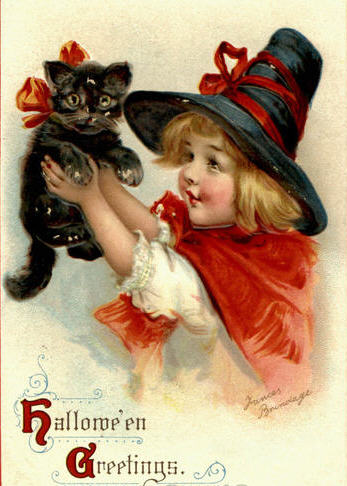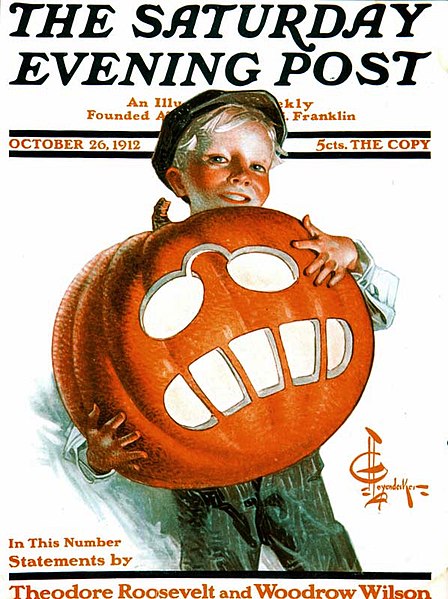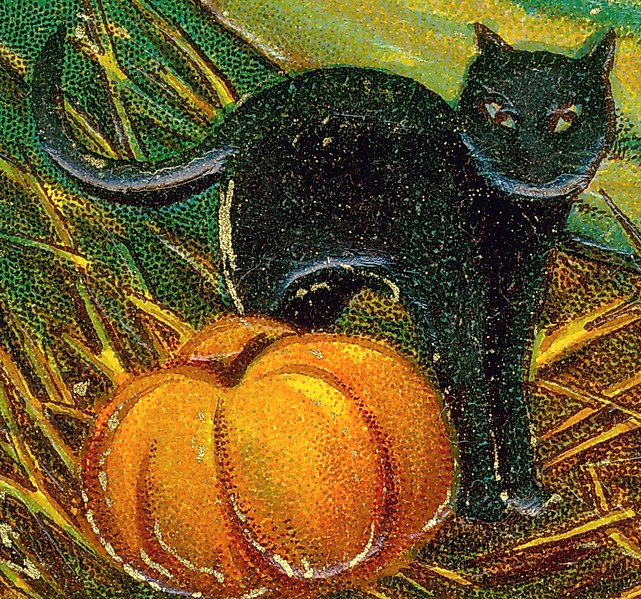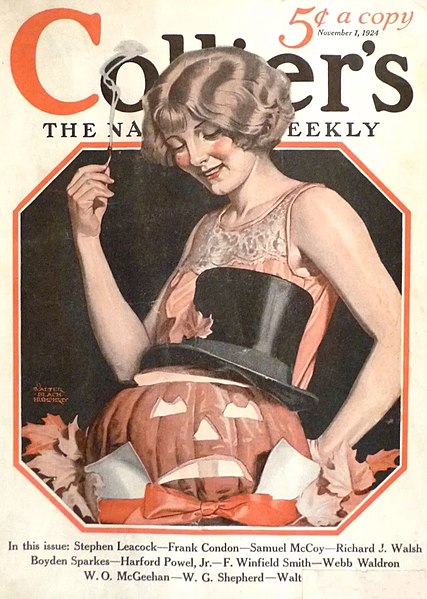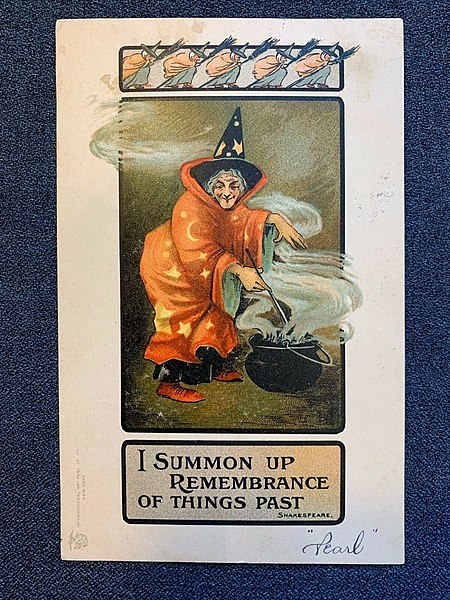When Black Cats Prowl and Pumpkins Gleam: How Orange & Black Became Halloween
It is a truth universally assumed that Halloween adopted its banner colors because autumn is nothing if not very, very orange.
And that assumption is not false.
There's just more to the story.
In agricultural societies, particularly those within the northern hemisphere, autumn is essentially The Dying Age.
Historically, as temperatures fell, nature decayed amidst the harvest, and livestock animals were slaughtered before winter. Even the hours themselves died off earlier and earlier each day.
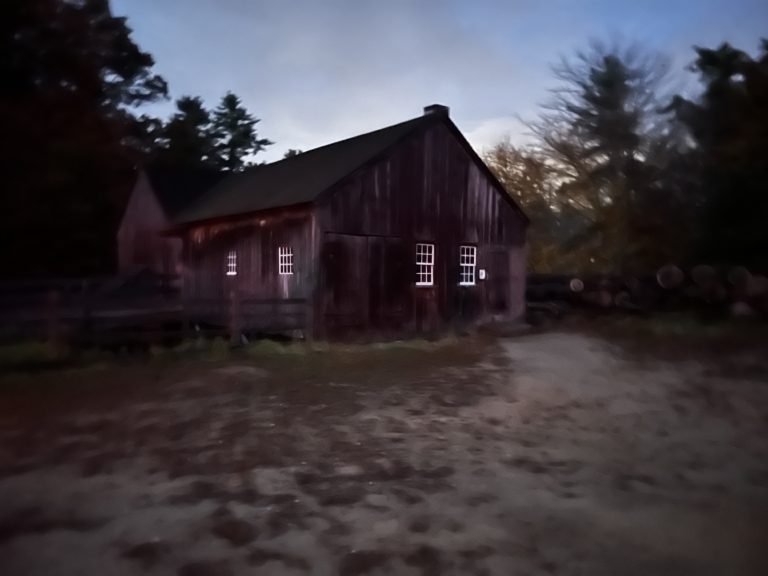
COPYRIGHT © Soliloquism 2022
This is recognized as the impetus for the ancient Gaelic festival of Samhain.
Samhain was a so-called “threshold” celebration, occurring as it did between an equinox and solstice. And the liminality of the Samhain festival is the heart of its eeriness.
This in-betweenness is what lifted the gauzy veil between reality and the Otherworld, where faeries played and the dearly departed wandered.
Samhain began at sunset on the last day of October, and concluded at sunset the next day on the first day of November; this is because, in Celtic societies, this is when a day began.
And so, in the advancing night, celebrants lit ritual bonfires atop the hills. They congregated, often throwing bones onto the flames--a practice which informs the word's etymology: a "bone fire."
These blazes were made with the friction of one piece of wood against another, the process of which was known as a 'force-fire'. Practicality aside, it likewise functioned as folk magic well into the 1800s.
It was believed that force-fires would counteract bewitchment, as well as the infectious diseases (known collectively as 'murrain') that too often befell cattle.
When the stock of any considerable farmer was seized with the murrain, he would send for one of the charm-doctors, to superintend the raising of a need-fire... By constant friction and pressure, the ends of the auger would take fire, from which a fire would be instantly kindled, and thus the needfire, would be accomplished... A fire kindled from this needfire... and the cattle [were] brought to feel the smoke of this new and sacred fire, which preserved them
The bonfires of Samhain are also believed to have served purposes of so-called sympathetic magic, wherein the fires imitated the protective elements of the sun.
And when the bonfires were sparked against the darkness, they burned, bright and oh-so-orange, in the black of night.
The black of night, in which the ghosts of the dead stepped through the permeable boundary to the living world.
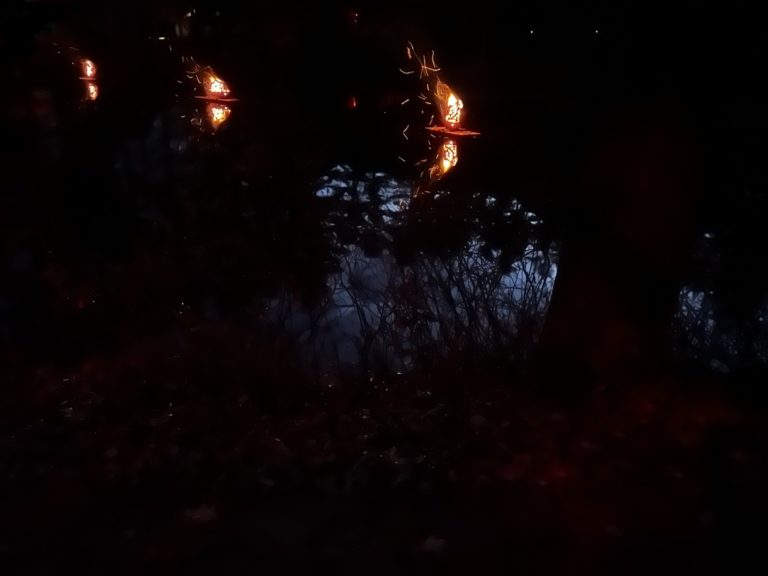
COPYRIGHT © Soliloquism 2022
In the light of a force-fire, all of its surroundings, too, would glow: the flickering ground, the bats tumbling down to hunt the insects drawn by the light; the celebrants themselves.
All cast in lively orange and shades of black.
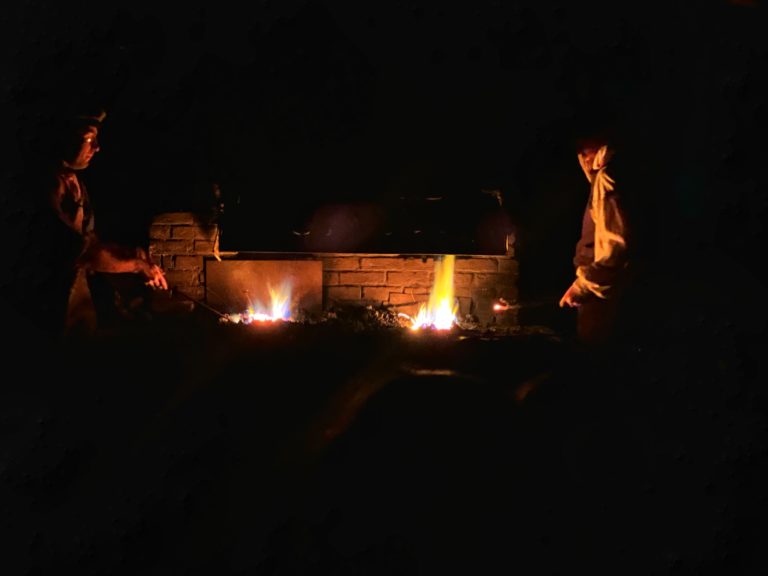
COPYRIGHT © Soliloquism 2022
The color orange dominates the autumn harvest season beyond the ancient fires of Samhain, of course. Just uttering the word 'October' invites mental images of fluttering orange foliage and grimacing orange gourds.
The latter, however, is a tradition grown up from American farmlands.
Pumpkins are a long-domesticated plant native to the American continents.
And while there are millions of pumpkins now grown in the United Kingdom every year, they did not exist when Irish and Scottish citizens began emigrating en masse to the United States during the nineteenth and early twentieth centuries.
As generations of these immigrants introduced Gaelic Halloween traditions to their new country, the old-world custom of carving jack o' lanterns from turnips and potatoes was adapted to take advantage of more readily available produce: the plump and orange pumpkin.
These many natural orange elements--fire, leaves, and rotund gourds--no doubt inform the modern iteration of this peculiar gothic holiday.
But it was the savvy of one manufacturing company that popularized the color scheme that we recognize as Halloween.
The Dennison Manufacturing Company was established in 1844, when an eponymous father-and-son team pioneered a better jewelry box: one made of paper (as was standard at the time), but domestically produced, and more durable and attractive than the imported options then available.
By the turn of the twentieth century, the Dennison paper-product lines had expanded to include crepe paper.
And Dennison set out to make crepe paper the most indispensable novelty decoration of them all.
‘There is something new in the old and delightfully spooky Eve of All Saints. It is paper… this sounds simple enough, but in reality it is almost magic.’
From ‘Some New Hallowe’en Magic’ by A.W.R. and published in Harper’s Bazaar, October 1912
Halloween parties, once unusual, were becoming more popular by the year.
And in Halloween, a holiday less commonly celebrated than Christmas, the Dennison Manufacturing Company saw a profitable opportunity to promote its crepe paper by making it the go-to product for Halloween merrymaking.
Halloween decorations certainly existed prior to Dennison’s revelation, but the decorations were not commercial. Historian Lesley Bannatyne has stated that parties of this period typically used festive decor that was derived from more natural resources.
"The natural colors they had to work with in late October were largely orange and yellow: pumpkins, chrysanthemums, marigolds, corn, hay bales... But Halloween party décor was also about creating an otherworldly atmosphere — eerie, spooky, ghostly — and for that, you needed a measure of darkness."
That 'measure of darkness' was more than necessary, "for unless a mysterious atmosphere is created in the rooms," published the Pictorial Review magazine in 1907, "the festivities would cease to be interesting even to children."
So for its brand new Halloween crepe, the Dennison Manufacturing Company paired orange with black.
In addition to solid colors, Dennison made crepe with printed patterns. Printing on bright crepe paper meant using black ink--perfect for grinning cat faces, wide-winged bats, and witch silhouettes.
This black ink necessitated a brightly colored background; so, most likely running with the long-established harvest colors, Dennison chose orange, red, and yellow.
HALLOWE’EN COLORS. Orange is a bright and glowing color, well suited to decorating for Halloween. Black and white give sharp contrast and gray has a softening influence.
To sell their new Halloween crepe, Dennison decided to print a book.
Dennison had produced a so-called instruction booklet before. It was called Art and Decoration in Crepe and Tissue Paper, and it had been circulated since 1894.
But unlike its previous effort—and unlike any holiday promotional material at that time—Dennison’s Bogie Book was all about Halloween.
The Bogie Book offered easy-to-do ideas for home-made Halloween decorations, costumes, and party games--all to be accomplished with the use of specific rolls of Dennison crepe paper, complete with individual product numbers and convenient ordering instructions.
Decorate the living room with vivid orange and black. The doorway, windows, chandelier and fireplace can all be effectively “dressed up.” The doorway shown will give any timid guest a thrill as she tries to enter the room without encountering the dangling spider. To copy it, fasten natural branches above the door frame and suspend orange, yellow and black crepe paper moss from them, allowing it to hang very irregularly… the chandelier sheds a weird glow over the whole room through the long orange crepe paper fringe that surrounds it.
The Bogie Book, however, was not an overnight success.
In fact, after its initial publication, Dennison did not issue a sequel until 3 years later, in 1912.
The cover art of the 1912 edition incorporated much of what is now recognized as Halloween iconography.
The soft cover featured the silhouettes of three hunched witches around a cauldron, a trio of screeching black cats around their feet. Above their pointed hats, the tree branches are perched by owls and hung with jack o' lanterns, all of them black with bright orange eyes. Beneath the illustration, in vibrant lettering, it reads only "Dennison's BOGIE BOOK".
The 1913 Bogie Book cover art likewise featured a shadowy gathering of witches under a tree. They are outlined against a starry sky with orange light cast by the moon. The lead witch, bent over a walking stick, has a black cat on her shoulder and a wide-eyed owl overhead. In the background, bats fly past the moon, giving the impression of a distressed face.
Halloween, it would seem, was fast catching on.
After that, the Dennison Manufacturing Company began publishing a new Bogie Book every year.
Their popularity grew so much that, by the early 1920s, the price of the Bogie Book had doubled to ten cents a piece.
A preserved countertop store display from that same time period exclaims: "HALLOWEE'N is coming Oct. 31st" and "You'll need Dennison's Bogie Book, 10¢per copy."
The cardboard display is, of course, predominantly black and orange, with a harlequin border. Its illustrations include a flying witch on a crescent moon, a prowling black cat, and a jack o' lantern.
Vintage Halloween postcard circa 1915.
PUBLIC DOMAIN
So year after year, Americans were encouraged to buy orange-and-black printed crepe paper aplenty, or otherwise purchase Dennison's pre-fabricated stock pieces, in order to have the most fabulous and ‘weird’ Halloween parties.
Every issue included step-by-step instructions to make things like hanging honeycomb pumpkins, haunting hallways and hidden fortune tellers that would foretell romance and frivolous woe.
There were even instructions on how to make wear-once, worry-free costumes.
They were, of course, made of crepe paper.
Generic by today's standards, these disposable costumes were usually archetypically spooky Halloween characters such as harlequin figures, fortune tellers, and witches. Sometimes, girls wore more 'pretty' thematic costumes, like 'Night' or 'The Moon.'
And these outfits were always illustrated in shades of orange, red, and black.
Weird designs and bright orange in contrast with black make it possible to create very striking costumes for the Hallowe’en party with very little work.
The ongoing success and novelty of Dennison's Bogie Books set forth the iconic color palette of modern Halloween.
As other companies, such as The Beistle Company, took their cues from Dennison, they also promoted the orange-and-black color scheme for their own seasonal products.
Other publications also followed suit, contributing their own decorating advice to Halloween hostesses.
Dennison’s Bogie Books were published annually from 1912 until 1935. Only two years halted its production--the Great World War in 1918, and the onset of the Depression in 1932.
They remain some of the most highly sought-after Halloween ephemera among collectors, even today.
And thanks to the Dennison Manufacturing Company, Halloween and its allure is anything but ephemeral.
Some [superstitions] have been added—some lost; but we today, in America, celebrate the night for its weird mystery and flavor of romance, and because its games foretell the future.
Even if it turns out that Hallowe'en is made of crepe paper.
SOURCE MATERIAL
https://publicdomainreview.org/collection/dennison-s-bogie-book-for-halloween-1920
https://vintagehalloweencollector.com/dennisons-bogie-books-advertising/
https://www.thefoodhistorian.com/blog/a-history-of-dennisons-bogie-book-and-halloween
https://babel.hathitrust.org/cgi/pt?id=uva.x004316506&view=1up&seq=39
https://www.ctpost.com/living/slideshow/TBT-This-is-Halloween-197343.php
https://www.redbookmag.com/fashion/news/g3755/vintage-halloween/?slide=13
https://www.vintagebeistle.com/store/pg/8-The-History-of-the-Beistle-Company.aspx
share

